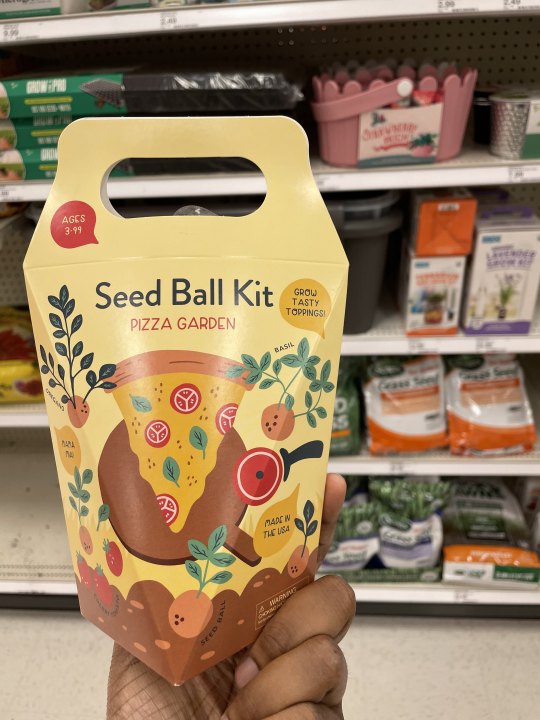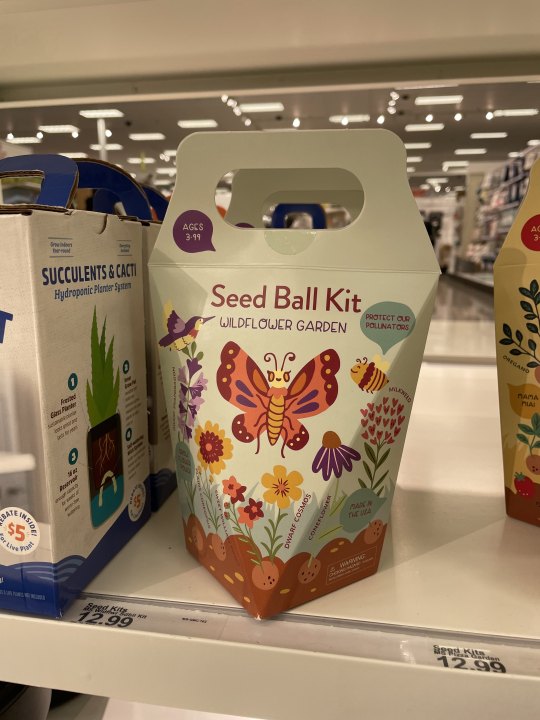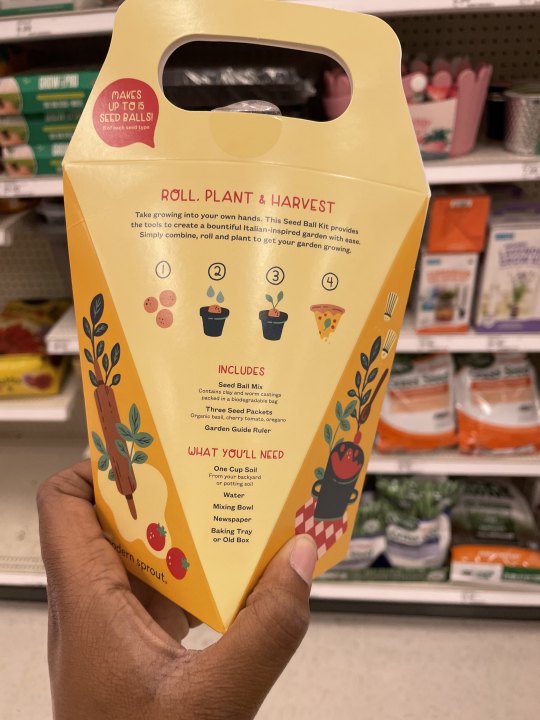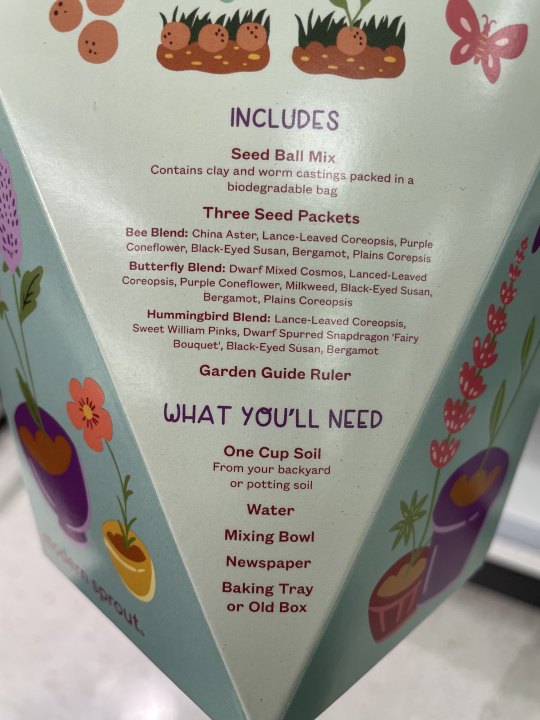#anyways someday I'm gonna make my own seedbombs. I just gotta figure out what kind of clay to use and where to get a reasonable amount.
Text
Guerrilla Gardening Commodification (?)
Alright friends so I was shopping at Target with a friend and I went to check out their Spring/Outdoors section because of course I did and I saw an assortment of 'seed ball' gardening kits. See below.



Now, this caught my eye for several reasons. For one, I'd been thinking about making seed bombs (another term for seed balls) for awhile now, but hadn't figured out where exactly to get the clay from. I've also already started thinking about what I wanted to grow in my garden, as well as what I wanted to put in my hypothetical seed bombs. Not to mention, they're bright and colorful.
Perhaps I'm reading into it too far. But the origin of guerrilla gardening is gardeners planting things--food, flowers, etc--on land that they don't have the legal rights to. It's been a form of direct action and protest from the beginning, and not necessarily one that always has positive connotations either, depending on who you ask.
Granted, in recent years, it's gotten a lot of positive press--I'd heard of the idea of guerrilla gardening in this time, where lovely positive articles were being written, morning news shows were doing quirky little shorts showing off seed bombs as a cute fun activity with your kids in the backyard, and guerrilla gardeners were getting TedTalks. Hell, the first time I'd heard of a 'seed bomb' was volunteering at the zoo as a teenager and making and selling them for a dollar donation to help save tigers. It was literally the whole thing that made me want to garden in the first place! Is the positive PR a bad thing? Not in my opinion, no. Sharing positive radical ideas and concepts, drawing attention to the lack of green spaces and food access in communities, and boosting the amount of habitat for pollinators are all fantastic things! But at the same time, I don't know how to feel about these kits. It sort of feels like commodifying and capitalizing a revolutionary act, sort of 'sanitizing' it to be more PR friendly? Again, I could be overreacting.

The entire air these kits had to me was sort of a 'hey, make seed bombs, toss them in your backyard! How fun!' Am I going to demand that the company making these puts an entire history lesson on the back of every package, mentioning the origins of seed bombs and their revolutionary nature? Not necessarily, but still.
Obviously, this seed bomb kit could be the thing that gets someone into gardening, which is always a plus in my book. Maybe people will use the seed bombs for their intended purpose, and throw them into empty lots and neglected spaces to create some color in their worlds (though, at that note, I'm not sure how excited to be about people throwing tomato seeds into lots where they may pick up toxins from the ground that people may try to eat later). But still, in the moment, I was getting a very heavy 'oh hey we're sanitizing your movement' sort of vibe.
History of guerrilla gardening aside, as a pollinator gardener, I wanna talk about the stuff included in the wildflower kit.


The front of the box has cute pictures of hummingbirds, bees, and butterflies, hanging out around drawn and labeled flowers; dwarf snapdragons, plains coreopsis, sweet william pinks, dwarf cosmos, coneflower, and milkweed (if you know me you know I love milkweed). The back lists all the flowers included in each 'set' of seeds. But you've gotta wonder... are these native? And to where? It says it was made in the USA, but the USA is pretty big, with a wide variety of different pollinators and pollinator plants in each region. Something native to one area can be invasive in another, which is never really good. The company making these kits, Modern Sprout, is based in Chicago, Illinois. They have a lot of other products on their website, many of which are all very cute, but. There are over 100 species of milkweed native to the United States, and they don't all grow well in the same places or are even native to the same places. The back of this kit only says 'Milkweed.' Thank you. Which one is it? Am I going to plant swamp milkweed (Asclepias incarnata) in an area better suited for common milkweed (Asclepias syriaca)? Am I going to be planting the mildly-controversial tropical milkweed (Asclepias curassavica) all over my neighborhood? This doesn't even begin to address the other plants in this kit, which I recognized the names of but not enough to know intimately if they're native to my area. The idea of someone intending to do good but accidentally spreading an invasive species around is scary because it's possible.
I don't think I'm allowed to critique too much, seeing as I did end up impulse-buying the kit. I'm going to double check and see if these are all native (maybe the inside has more information, specific species names?), and if not I'll just use the clay and worm castings to make my own seed bombs. I just had a lot of thoughts, and wanted to start a discussion of sorts?
#guerrilla gardening#guerilla gardening#gardening#outdoor gardening#edible gardening#pollinator gardening#seed bombs#seed balls#flower gardening#solarpunk action#solarpunk#ani rambles#out of queue#anyways someday I'm gonna make my own seedbombs. I just gotta figure out what kind of clay to use and where to get a reasonable amount.#i dont want a whole bigass elementary school size tub of clay but I need SOME yknow?
527 notes
·
View notes